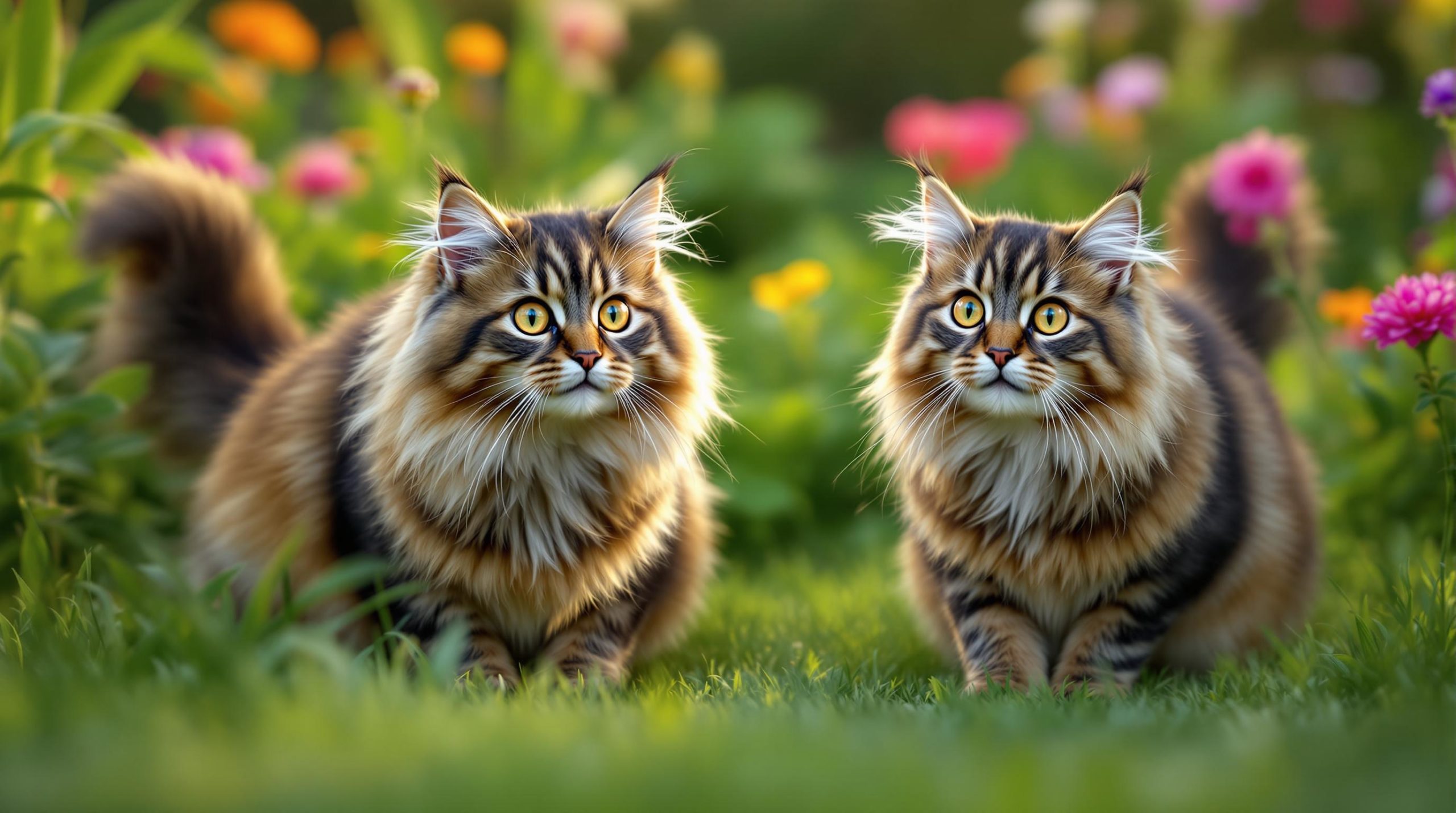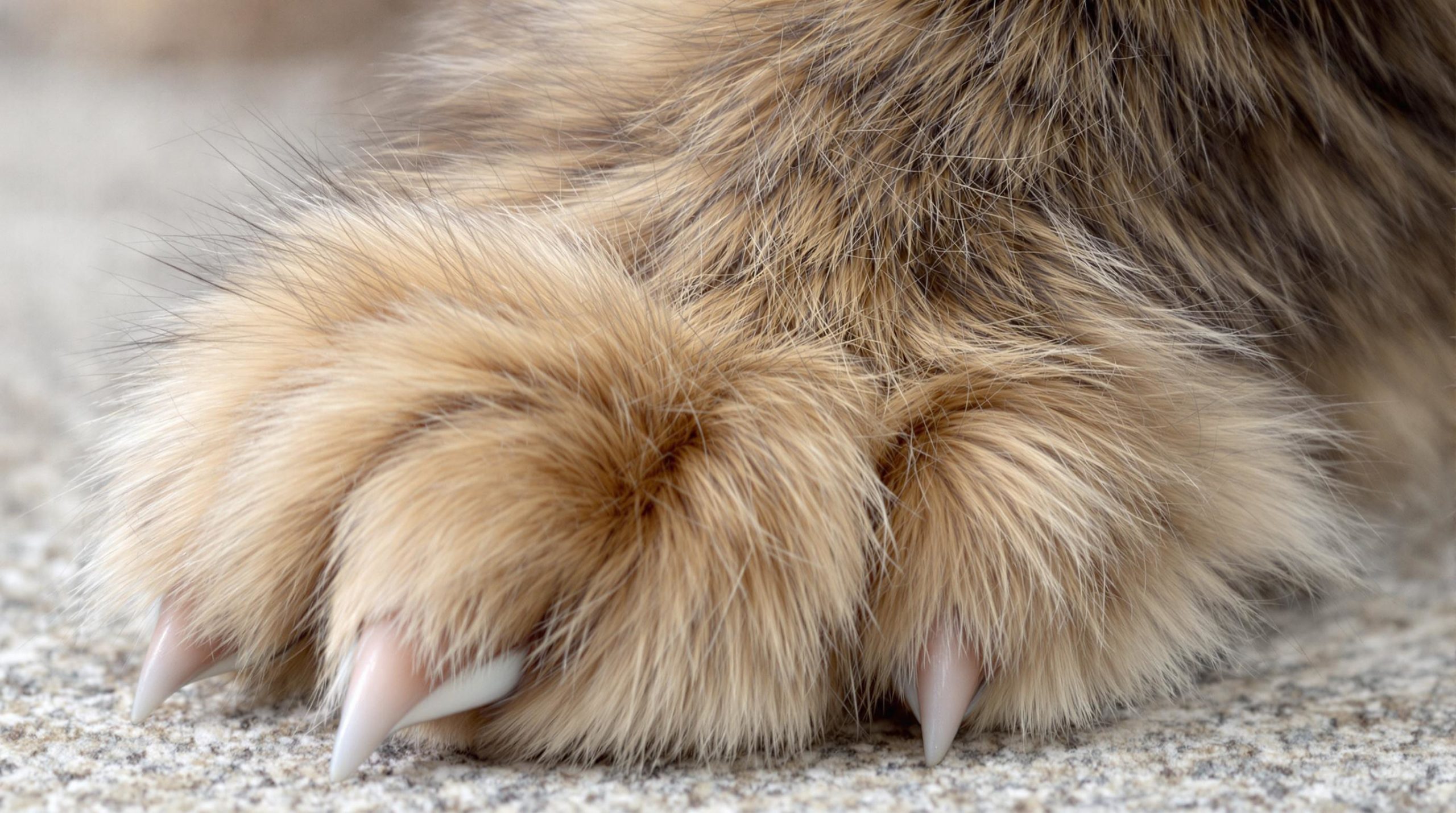Maine Coons will eagerly hunt these creatures when the opportunity arises

Maine Coons are more than just fluffy companions; beneath their voluminous coats beats the heart of a skilled hunter ready to spring into action at the slightest movement. Their reputation as affectionate giants masks an ingrained predatory instinct inherited from generations of survival in Maine’s rugged landscapes. Understanding these hunting tendencies is the key to nurturing their natural behaviors and ensuring their wellbeing without compromising the safety of local wildlife.
Understanding What Maine Coons Hunt: From Tiny Prey to Energetic Games
When Maine Coons get the chance, they eagerly pursue a variety of creatures. This pursuit ranges from small rodents scampering through the underbrush to nimble birds taking flight at dawn. Their hunting spree doesn’t stop outdoors; indoors, their target shifts to toys mimicking prey movements, providing an outlet for their innate chase drive.
- Rodents — Mice, rats, and other small rodents top their prey list. Their agile bodies and potent claws make catching these quick movers a thrilling challenge.
- Birds — Small birds like sparrows are frequent targets, especially when accessible near window sills or feeders.
- Insects — Houseflies, moths, and even spiders become lively distractions, stimulating their swift reflexes.
- Fish — For water-adjacent Maine Coons, watching fish swim can turn into a playful fishing expedition.
- Reptiles — Occasionally, small lizards or similar reptiles trigger their chase instincts.
Catering to these natural behaviors by offering toys and play sessions helps curb the urge to hunt household birds or rodents, providing a safe and satisfying outlet for their skills.

| Prey Type | Typical Behavior | Indoor Alternative |
|---|---|---|
| Rodents | Chasing, pouncing, and gripping with claws | Feather wand toys and plush mice |
| Birds | Stalking and swift leaps | Laser pointers and interactive flying toys |
| Insects | Quick swipes and sudden jumps | Small rolling balls and buzzing toys |
Anatomy and Instincts: How Maine Coons Are Perfectly Built to Hunt
The Maine Coon’s distinct physical traits aren’t just charming—they’re built for hunting success. Their large paws act like snowshoes, distributing their weight for silent stalking in natural environments. Strong hind legs enable powerful leaps, allowing them to ambush prey with explosive force. Additionally, those trademark tufted ears serve a functional purpose: they fine-tune sound perception, helping pinpoint even the faintest movements.
- Powerful hindquarters allow them to jump up to six times their body length, surprising unsuspecting prey.
- Long, bushy tail provides balance during agile twists, critical when navigating tight spots during a chase.
- Sharp retractable claws help catch and hold prey firmly without dulling their claws between hunts.
These attributes combine with their natural curiosity and alertness, making them perpetual explorers ready to pounce.

| Physical Trait | Hunting Advantage | Behavioral Indicator |
|---|---|---|
| Large paws | Quiet movement over snow or soft ground | Stealthy stalking and slow approach |
| Strong legs | High jumps and quick sprints | Sudden pounces and chasing bursts |
| Tufted ears | Acute hearing to locate prey | Quick ear twitches and head turns |
Behavioral Patterns That Reveal the Hunter Within Your Maine Coon
Observing a Maine Coon chasing a feather toy or crouching silently reveals more than playful antics; it’s a manifestation of its evolutionary past. These behaviors are survival mechanisms resurfacing even in domestic settings.
- Stalking and Pouncing: Lowered body posture, intense focus, and an explosive leap showcase proactive hunting techniques.
- Toy “Hunting” Rituals: Catching and carrying toys serve as practice runs for real prey capture and handling.
- Food Bowl Behavior: Guarding food or rushing to eat can mimic hoarding, common in wild cats.
- Gifting “Trophies”: Maine Coons might leave their “catch” (often toys) at their owner’s feet as a sign of sharing or pride.
Recognizing these signals as healthy predator outlets, rather than simply mischievous acts, is essential for proper care and enrichment.
| Behavior | Wild Instinct | Domesticated Outlet |
|---|---|---|
| Stalking | Quietly approaching prey | Slow, focused approach toward toys or laser dots |
| Pouncing | Capturing prey with a leap | Jumping on interactive toys or even hands |
| Gifting | Sharing kills with family | Bringing toys or found objects to owners |
Encouraging Safe Hunting Behavior Indoors and Outdoors for Maine Coons
Maintaining your Maine Coon’s hunting instincts is vital, yet it should be balanced with safety for both the cat and local wildlife. Channeling their hunt drive indoors offers a win-win strategy, ensuring mental stimulation and physical activity without the risks tied to outdoor predation.
- Interactive Toys: Use wands, feather toys, and remote-controlled gadgets that mimic prey behavior to engage your cat.
- Puzzle Feeders: Combine mental challenge and physical effort by hiding treats in balls or treat dispensing toys to prolong playtime.
- Outdoor Enclosures: If space permits, secure enclosures enable real-world hunting experiences without predator risks or escaping.
- Toy Rotation: Regularly swapping out toys keeps your Maine Coon engaged and prevents boredom.
- Clicker Training: Enhances mental engagement by teaching hunting-related tricks like “fetch” or “hunt.”
Outdoor hunting should be managed wisely, with booster shots up to date and gear like reflective collars and microchips ensuring safety. Supervision remains key to reducing risks from traffic, predators, and disease transmission.
| Hunting Support Method | Benefits | Tips for Success |
|---|---|---|
| Interactive Toys | Replicate prey behavior and improve agility | Use varied toys like wands and laser pointers |
| Puzzle Feeders | Stimulate mind and extend playtime | Hide treats in rotating puzzles |
| Outdoor Enclosures | Safe real-life hunting experience | Ensure secure and shaded environment |
| Toy Rotation | Prevents boredom and renews interest | Switch toys every few days |
| Clicker Training | Builds hunting skills and mental focus | Practice “fetch” and “hunt” games |
Key Traits That Make Maine Coons Exceptional Hunters Beyond Size and Strength
Maine Coons don’t just rely on their imposing size or dense fur for hunting success. Their impressive intelligence, acute sensory abilities, and adaptability make them top-tier predators among feline breeds.
- Superior Intelligence: This breed quickly learns new skills, including complex hunting strategies, making them highly effective hunters. The Maine Coon intelligence allows them to adapt their tactics dynamically.
- Robust Build: Weighing between 12 and 21 pounds, they have the muscle mass to overpower prey and endure rigorous chases, even in rough climates.
- Energetic Nature: Their stamina and playful energy fuel extended hunts and vigorous play sessions.
- Exceptional Hearing: Enhanced by large, tufted ears, they can pinpoint the faintest rustle. This superior auditory sense sets them apart from other domestic cats.
- Large Feet and Sharp Claws: These provide grip and power, making capture and control of prey efficient.
- Powerful Bite: Typically ending a hunt with a neck bite, this cat’s jaw strength ensures swift capture.
- Acute Sense of Smell: With about 200 million olfactory receptors, their nose directs them straight to hidden prey.
- Night Vision: A specialized retinal layer boosts their ability to hunt in low light, perfect for dusk or dawn predation.
Discovering how these traits interplay can be fascinating. For a comprehensive guide on owning and enriching Maine Coons, the resources at the Maine Coon Cat Club are invaluable.
| Trait | Functional Benefit | Example in Hunting |
|---|---|---|
| Intelligence | Learn and adapt hunting techniques | Strategic ambush and problem-solving with puzzles |
| Hearing | Locate hidden prey by sound | Tracking movements of rodents through walls |
| Night Vision | Hunt successfully at dawn or dusk | Chasing nocturnal insects or small mammals |
FAQ About Maine Coons and Their Hunting Habits
- Q: Do Maine Coons need hunting outlets indoors?
A: Yes, providing toys and interactive play prevents frustration and supports their natural instincts, keeping them mentally and physically healthy. - Q: Are Maine Coons good at hunting birds?
A: Indeed, their stalking skills make birds common prey, but safe management indoors or supervised outdoor time can protect local species. - Q: How can I safely encourage my Maine Coon’s hunting skills?
A: Use puzzle feeders, interactive toys, and controlled outdoor enclosures to mimic the hunting experience safely. - Q: Why does my Maine Coon gift me toys?
A: This behavior is a vestige of wild sharing practices — your cat is showing affection and pride in their catch. - Q: What brands offer good quality toys and food for Maine Coons?
A: Trusted brands like Petco, Chewy, Purina, Hill’s Science Diet, Blue Buffalo, Royal Canin, Friskies, Iams, and Wellness provide quality options fitting the nutritional and playful needs of Maine Coons.